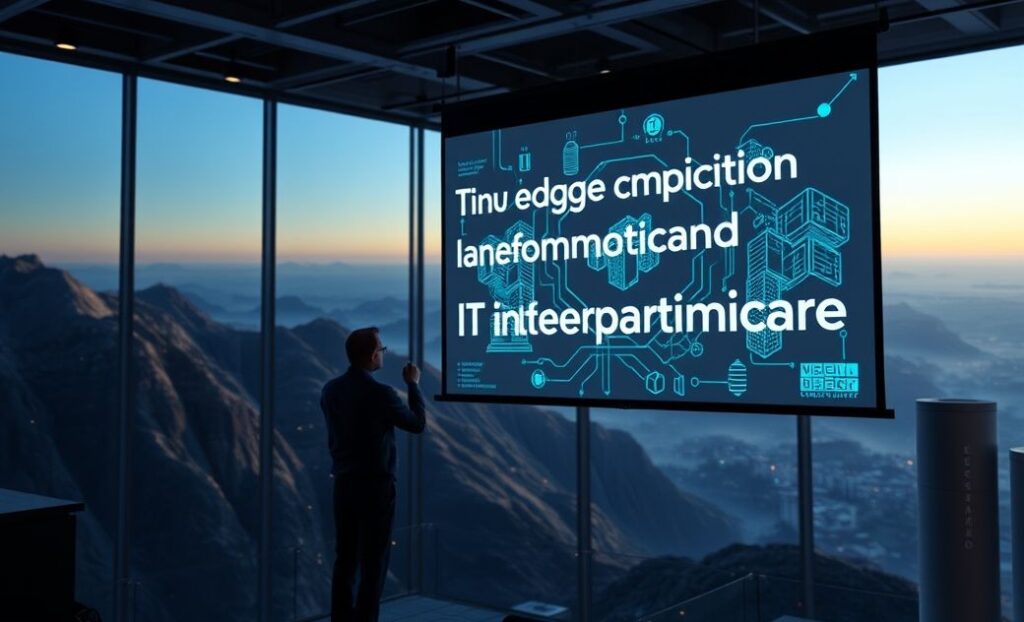Edge computing is rapidly transforming the landscape of IT infrastructure, offering a new paradigm that enhances the way data is processed and delivered. As businesses grapple with ever-increasing amounts of data from IoT devices and other sources, edge computing provides a solution that brings computation and data storage closer to the location where it is needed, thus enhancing the speed and efficiency of data handling.
Understanding Edge Computing
Edge computing refers to a distributed computing framework that brings enterprise-level applications closer to data sources like IoT devices or local edge servers. This proximity reduces latency, enhances speed, and optimizes bandwidth by processing data locally rather than relying on a centralized data center.
The Importance of Data Proximity
With edge computing, data is processed near the source, which is particularly important for real-time applications. This reduces the round-trip time for data traveling to a central cloud server, allowing for quicker responses. For instance, in autonomous vehicles or smart grids, even slight delays can result in significant repercussions, making edge processing indispensable.
Reducing Latency
By reducing the physical distance that data must travel, edge computing slashes latency rates. Applications that rely on real-time data processing, such as augmented reality (AR) and virtual reality (VR), benefit significantly from this reduction, delivering seamless user experiences.
Impact on IT Infrastructure
The introduction of edge computing demands a reevaluation of traditional IT infrastructure. Businesses are now strategically placing computing resources and data storage at the “edge” of the network, much closer to where data is generated and consumed.
Decentralized Computing Resources
Traditional centralized IT systems are being supplemented with decentralized resources. This shift requires adjustments in network architecture to accommodate increased connectivity and data demands at various network points. As a result, enterprises are investing in micro data centers and edge devices.
Enhanced Security Measures
With data being processed at multiple locations, security strategies must adapt. While edge computing can minimize some risks by reducing data exposure across networks, it also necessitates stricter, localized security protocols to prevent breaches at edge nodes, thus ensuring data integrity and confidentiality.
Benefits of Edge Computing
The adoption of edge computing offers several advantages, particularly for those companies seeking to enhance operational efficiency and reduce costs.
Improved Performance and Reliability
By processing and storing data closer to its source, edge computing enhances application performance and system reliability. Users experience less downtime and improved service delivery, making it an attractive proposition for businesses of all sizes.
Cost Efficiency
Moving data processing to the edge reduces the burden on centralized data centers, curbing the costs associated with data transportation and bandwidth. Additionally, local data processing can cut operational costs dramatically.
Challenges and Considerations
Despite the clear benefits, there are challenges associated with integrating edge computing into existing IT ecosystems. Organizations must consider the implications for network management, security, and overall IT strategy.
Integration with Legacy Systems
Many organizations face difficulties when integrating edge computing with existing legacy systems, necessitating significant overhauls or upgrades to achieve seamless interoperability.
Scalability Concerns
While edge computing offers scalability, there are concerns about managing a geographically dispersed network of edge devices. Enterprises need robust management tools and practices to ensure they leverage the benefits of a distributed model effectively.
In conclusion, edge computing is reshaping IT infrastructure by addressing critical needs for speed, efficiency, and cost-effectiveness. As the technology matures and challenges are addressed, it is expected to become a cornerstone of modern IT strategies, enabling businesses to harness the power of their data like never before.
